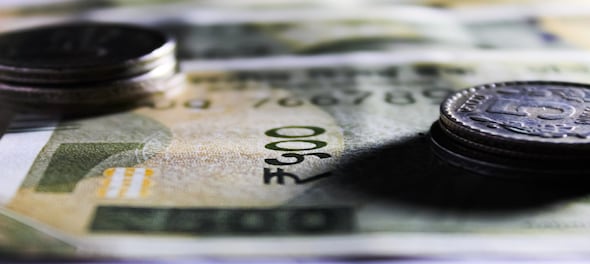
Deposit rates are in the spotlight, showing a steady and remarkable increase. This upward trend, observed both in the United States and India, is the result of a complex interplay of economic factors that are captivating investors and financial experts alike. One of the pivotal factors propelling the surge in savings and fixed deposit rates is the performance of US 10-year bond yields,
Live TV
Loading...
which recently soared to 4.2 percent.
This surge has occurred despite the release of softer job data in the United States. The key takeaway here is that the demand for government bonds remains robust, exerting significant upward pressure on deposit rates. There is a direct consequence of rising bond yields — as yields rise, banks are bound to raise the rates paid out on deposits to keep them attractive.
Axis Bank Group Executive & Head of Treasury, Markets & Wholesale Banking Products Neeraj Gambhir explained, "We are flattish in terms of bond yields in this quarter so far. So, that should give some idea and what is going to happen on that side."
It's this relentless demand for bonds that has set the stage for banks to vie for investors' funds by offering increasingly competitive deposit rates.
A look at recent deposit rates of key banks
If we look at the Indian scenario, banks have been revising their deposit rates in the past. A significant shift occurred in fixed deposits as interest rates began to rise when the RBI initiated repo rate hikes back in May 2022. Over the subsequent 10 months, the central bank implemented a series of repo rate increases that lasted till February 2023. Banks followed suit by raising their FD rates, albeit with some lag. The banks that initially delayed raising their FD interest rates have since increased them to catch up.
Here are the current FD rates of some of the banks:
| Banks | For General Citizens (p.a.) | For Senior Citizens (p.a) |
| RBL Bank | 3.50% to 7.80% | 4.00% to 8.30% |
| IDFC First Bank | 3.50% to 7.50% | 4.00% to 8.00% |
| KVB Bank | 4.00% to 7.20% | 5.90% to 7.70% |
| Canara Bank | 4.00% to 7.25% | 4.00% to 7.75% |
| Punjab National Bank | 3.50% to 7.25% | 4.00% to 7.75% |
| Bank of Baroda | 3.00% to 7.05% | 3.50% to 7.55% |
| Kotak Mahindra Bank | 2.75% to 7.20% | 3.25% to 7.70% |
| Axis Bank | 3.50% to 7.10% | 3.50% to 7.85% |
| HDFC Bank | 3.00% to 7.25% | 3.50% to 7.75% |
| State Bank of India | 3.00% to 7.10% | 3.50% to 7.60% |
| ICICI Bank | 3.00% to 7.10% | 3.50% to 7.60% |
| IDBI Bank | 3.00% to 6.80% | 3.50% to 7.30% |
(Source: Bankbazaar)
Other factors at play
In India, a different set of economic dynamics is at play, further fuelling the surge in deposit rates. The nation is grappling with deficient rainfall during the crucial month of August, a period of paramount importance for agricultural production. This unexpected setback, combined with mounting concerns over rising crude oil prices, has ignited inflation concerns.
Neeraj Gambhir provided further insight: "The second aspect of NIMs (net interest margins) is that the deposit repricing is still continuing in the system." Banks are proactively adjusting deposit rates to mitigate potential losses resulting from inflation.
Axis Bank CEO and Managing Director Amitabh Chaudhary also offered a critical perspective on the evolving deposit rate landscape. While talking exclusively to CNBC-TV18 at the Global Fintech Fest 2023, he said, "When rates fall, loans will reprice faster than deposits," underlining the importance of maintaining a delicate balance amid this dynamic environment.
He added, "At some stage, deposit growth needs to catch up with credit growth, otherwise we will struggle to grow advances at a certain pace."
In conclusion, the surge in deposit rates is a multifaceted phenomenon, driven by a confluence of global and domestic factors. While Gambhir stressed on the intricacies of the financial markets, Chaudhary highlighted the need for banks to adapt and strike the right balance for sustainable growth in these evolving times.
(Edited by : Shoma Bhattacharjee)
Check out our in-depth Market Coverage, Business News & get real-time Stock Market Updates on CNBC-TV18. Also, Watch our channels CNBC-TV18, CNBC Awaaz and CNBC Bajar Live on-the-go!


BJP's Hindi heartland dominance faces test in phase 3 polls
May 2, 2024 9:14 PM
Lok Sabha Election: Re-elections at a Ajmer booth after presiding officer misplaces register of voters
May 2, 2024 4:54 PM

